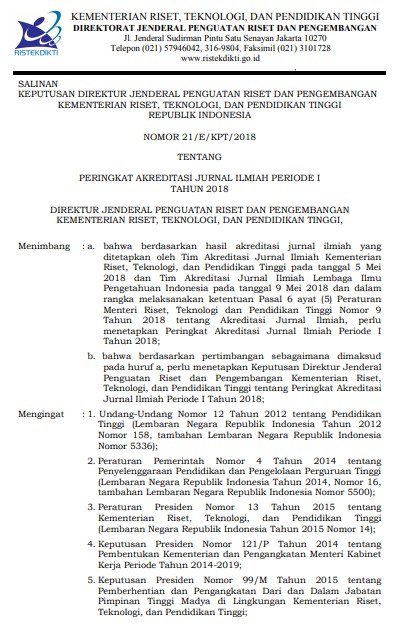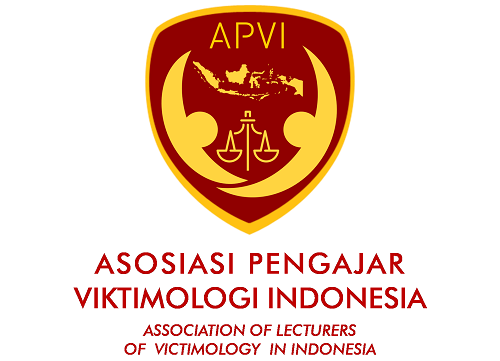Punishing The Bankruptcy Fraudsters: What Can Indonesia Learn from United States of America?
Abstract
Bankruptcy is a system that was created to provide financially distressed debtors relief from their debts while providing the creditors with a fair portion of the debtors’ assets. Unfortunately, certain parties might attempt to beat the system unfairly. The goals of this study are to compare Title 18 United States Code with Indonesia’s legal system regarding bankruptcy fraud and how the Indonesian bankruptcy law ought to be in regulating bankruptcy fraud. This research is qualitative, using a black letter method and legal comparative approach. The result of this study shows that Indonesian bankruptcy law does not regulate provisions regarding bankruptcy fraud as comprehensive as Title 18 United States Code. It is suggested that the Indonesian government amends the bankruptcy law, therefore the public’s confidence in the bankruptcy system can be preserved while providing a deterrence effect for the participants who might exploit the bankruptcy system for their advantages.
Keywords: bankruptcy; bankruptcy crime; fraud; white collar crime
Full Text:
PDF View
References
Title 18 United States Codes
Republik Indonesia, Kitab Undang-Undang Hukum Pidana, (1946).
United States v. Zehrbach 47 F.3d 1252 (3rd Circ), (1995).
United States v. Ellis 50 F.3d 419 (7th Cir), (1995).
Stuhley v. Hyatt, 667 F.2d 807, (1982).
United States v. Ballard 779 F.2d 287 (5th Cir), (1986).
United States v. Goodstein, 883 F.2d 1362 (7th Cir), (1989).
Administrative Office of the U.S. Courts. (2020). Public Access to Court Electronic Records. https://pacer.uscourts.gov/
In re Hogan, 214 B.R. 882 (Bkrtcy.B.D.Ark), (1997).
Barker, K., Stowell, N. F., Polansky, C., & Kieffer, D. (2010). The Bankruptcy Reform Act and Bankruptcy Fraud: Implications and Opportunities for CPAs. Journal of Forensic & Investigative Accounting, 2(3), 75–94.
Budivaja, I. ., & Bandrio, Y. (2010). Eksistensi Pidana Denda di dalam Penerapannya. Jurnal Hukum, XIX(19), 77–92.
Clancy, N., & Carroll, S. J. (2007). Identifying Fraud, Abuse and Error in Personal Bankruptcy Filings. RAND Corporation.
Clement, L. A. (2015). A Study on Bankruptcy Crime Prosecution under Title 18: Is the Process Undermining the Goals of the Bankruptcy System. Emory Bankruptcy Developments Journal, 31(2), 409–430.
Efrat, R. (2006a). Bankruptcy Stigma: Plausible Causes for Shifting Norms. Emory Bankruptcy Developments Journal, 22(2), 481–519.
Efrat, R. (2006b). The Evolution of Bankruptcy Stigma. Theoretical Inquiries in Law, 7(1), 364–393.
Gaumer, C. P. (1998). Bankruptcy Fraud: Crime and Punishment. South Dakota Law Review, 43(3), 527–565.
Hamzah, A. (2008). Asas-Asas Hukum Pidana. Rineka Cipta.
Hirsch, A. J. (1994). Inheritance and Bankruptcy: The Meaning of the “Fresh Start.” Hastings Law Journal, 45(2), 175–248.
Jackson, T. H. (2001). The Logic and Limits of Bankruptcy Law. BeardBooks.
Kadens, E. (2010). The Last Bankrupt Hanged: Balancing Incentives in the Development of Bankruptcy Law. Duke Law Journal, 59(7), 1229–1319.
Kampf, W. I., & Quam, J. M. (1991). The Intersection of Bankruptcy and White Collar Crime. Commercial Law Journal, 97(1), 70–83.
Korobkin, D. R. (1991). Rehabilitating Values: A Jurisprudence of Bankruptcy. Columbia Law Review, 91(4), 717–789.
Lorber, L., & Markell, B. A. (1994). Bankruptcy Crimes and the Federal Sentencing Guidelines. Federal Sentencing Reporter, 7(1), 49–51.
CV. Hitado v. New Universal Pte.Ltd, (2017).
Suparjo Rustam v. PT. Halimjaya Sakti - Medan, et.al, (2019).
McCoid, J. C. (1996). Discharge: The Most Important Development in Bankruptcy History. American Bankruptcy Law Journal, 70(2), 163–194.
McCullough, R. C. (1997). Bankruptcy Fraud: Crime without Punishment II. Commercial Law Journal, 102(1), 1–54.
Morse, D. J. (2018). Recent Developments in the Law Regarding Bankruptcy Crimes. Norton Annual Survey of Bankruptcy Law, 35, 1–7.
Ogier, T., & Williams, J. F. (1998). Bankruptcy Crimes and Bankruptcy Practice. American Bankruptcy Institute Law Review, 6(2), 317–358.
Publisher’s Editorial Staff. (2018). Bankruptcy Fraud Crimes. Corporate Counsel’s Quarterly, 34(4), 1–31.
Quilter, J., & Hogg, R. (2018). The Hidden Punitiveness of Fines. International Journal for Crime, Justice and Social Democracy, 7(3), 9–40.
Sano, H. (2000). Judicial Abuse o “Process”: Examining the Applicability of Section 2F1.1(b)(4)(B) of the Federal Sentencing Guidelines to Bankruptcy Fraud. Michigan Law Reviewi, 98(4), 1038–1071.
Singh, K. D. P., & Maria, A. V. (2019). Bankruptcy Fraud and Victim Redressal System: A Time for Change. Journal of Victimology and Victim Justice, 2(2), 1–18.
Sjahdeini, S. R. (2016). Sejarah, Asas, dan Teori Hukum Kepailitan: Memahami Undang-Undang Nomor 37 Tahun 2004 tentang Kepailitan dan Penundaan Kewajiban Pembayaran Utang (2nd ed.). Prenada Media.
Smolik, J., & Kajanova, A. (2018). Scheming to Defraud in an Insolvency Proceeding: A Specific Case of Economic Criminal Acts. Studia Commercialia Bratislavensia, 11(39), 107–117.
Stowell, N. F., & Barker, K. (2011). Fraud, Fraud, Fraud: Mortgage Fraud and Bankruptcy Fraud. Real Estate Review, 40(2), 47–62.
The United States Department of Justice. (2020). U.S. Trustee Program. justice.gov/ust
Warren, E. (1987). Bankruptcy Policy. The University of Chicago Law Review, 54(3), 775–814.
Wickouski, S. (1999). Defending the Bankruptcy Criminal: A Primer. Litigation, 25(4), 44–48.
Yaqin, A. (2007). Legal Research and Writing. Dophin Press, Sdn. Bhd.
Zweigert, K., & Kotz, H. (1998). An Introduction to Comparative Law (Third). Oxford University Press.
DOI: http://dx.doi.org/10.20884/1.jdh.2020.20.1.2874
Refbacks
- There are currently no refbacks.
JURNAL DINAMIKA HUKUM Indexed by :
 | Jurnal Dinamika Hukum | |
| Faculty of Law, Universitas Jenderal Soedirman | Copyright of Jurnal Dinamika Hukum | |
| Yustisia IV Building, Law Journal Center | ISSN 2407-6562 (Online) ISSN 1410-0797 (Print) | |
| Purwokerto, Central Java, Indonesia, 53122 | JDH is licensed under a Creative Commons Attribution 4.0 International License | |






